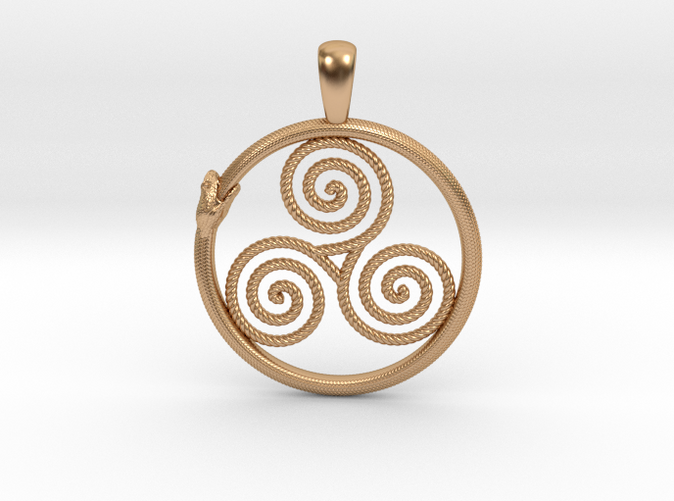Product Description
A triskelion or triskeles is a motif consisting of a triple spiral exhibiting rotational symmetry. The spiral design can be based on interlocking Archimedean spirals, or represent three bent human legs.
The triple spiral is found in artefacts of the European Neolithic and Bronze Age with continuation into the Iron Age especially in the context of the La Tène culture and related Celtic traditions. The actual triskeles symbol of three human legs is found especially in Greek antiquity, beginning in archaic pottery, and continued in coinage of the classical period.
In the Hellenistic period, the symbol became associated with the island of Sicily, appearing on coins minted under Dionysius I of Syracuse beginning in c. 382 BC. The same symbol later appears in heraldry, and, other than in the flag of Sicily, came to be used in the flag of the Isle of Man (known as ny tree cassyn "the three legs").
Greek τρισκελής (triskelḗs) means "three-legged". While the Greek adjective τρισκελής "three-legged [e.g. of a table]" is ancient, use of the term for the symbol is modern, introduced in 1835 by Honoré Théodoric d'Albert de Luynes as French triskèle, and adopted in the spelling triskeles following Otto Olshausen (1886). The form triskelion (as it were Greek τρισκέλιον) is a diminutive which entered English usage in numismatics in the late 19th century. The form consisting of three human legs (as opposed to the triple spiral) has also been called a "triquetra of legs" or triskelos, triskel.
The ouroboros is an ancient symbol depicting a serpent or dragon eating its own tail. Originating in ancient Egyptian iconography, the ouroboros entered western tradition via Greek magical tradition and was adopted as a symbol in Gnosticism and Hermeticism and most notably in alchemy. The term derives from Ancient Greek οὐροβόρος, from οὐρά oura 'tail' plus -βορός -boros '-eating'. The ouroboros is often interpreted as a symbol for eternal cyclic renewal or a cycle of life, death, and rebirth. The skin-sloughing process of snakes symbolizes the transmigration of souls, the snake biting its own tail is a fertility symbol in some religions, and the tail of the snake is a phallic symbol, the mouth is a yonic or womb-like symbol.
The pendant clip is designed to work with the most chains.
*Chain sold separately
